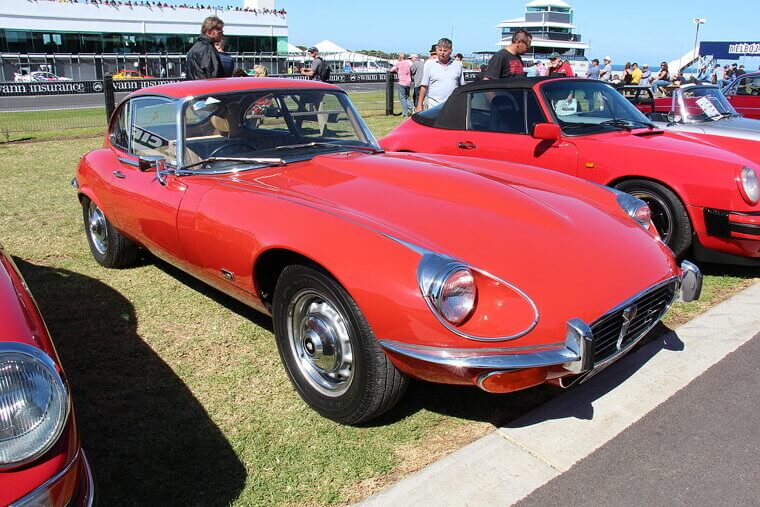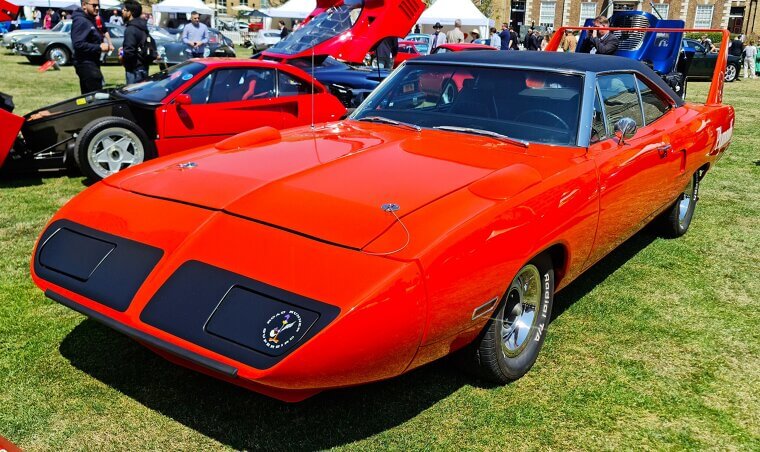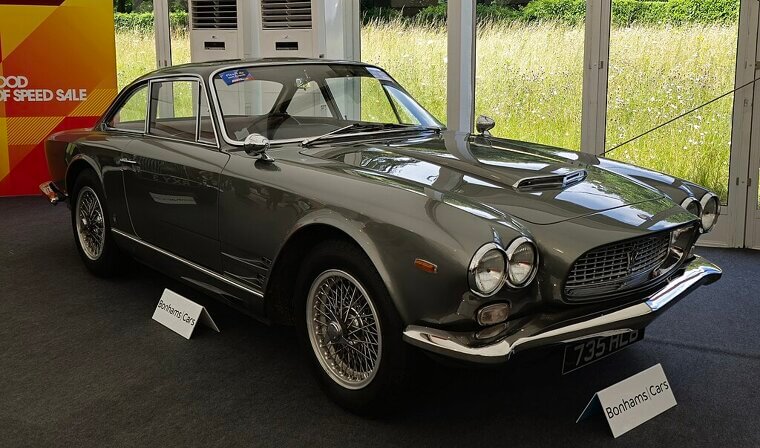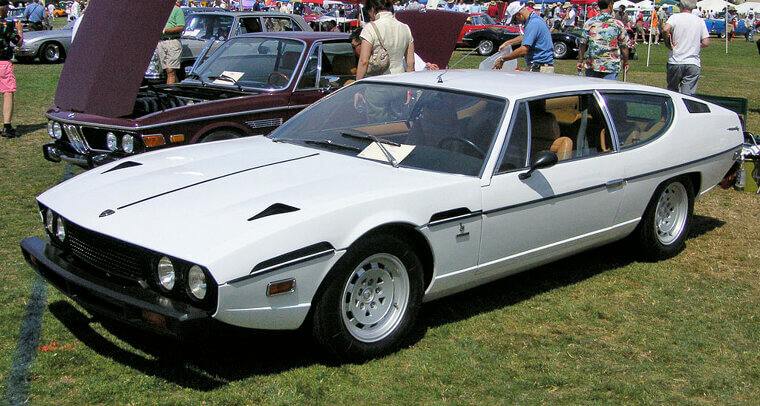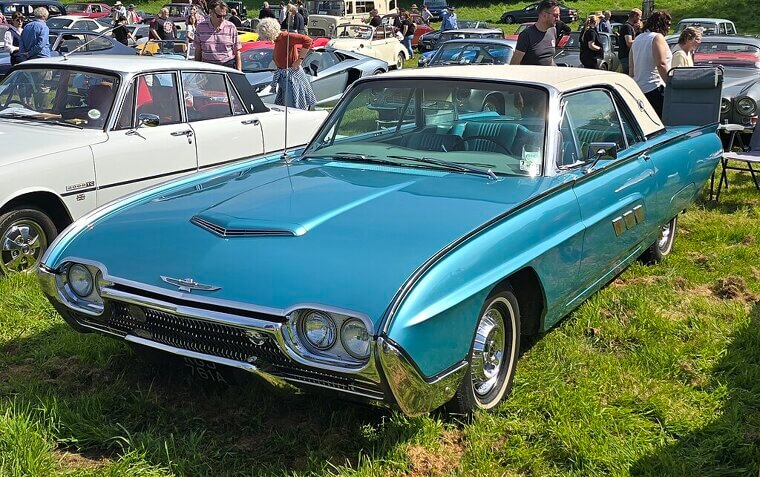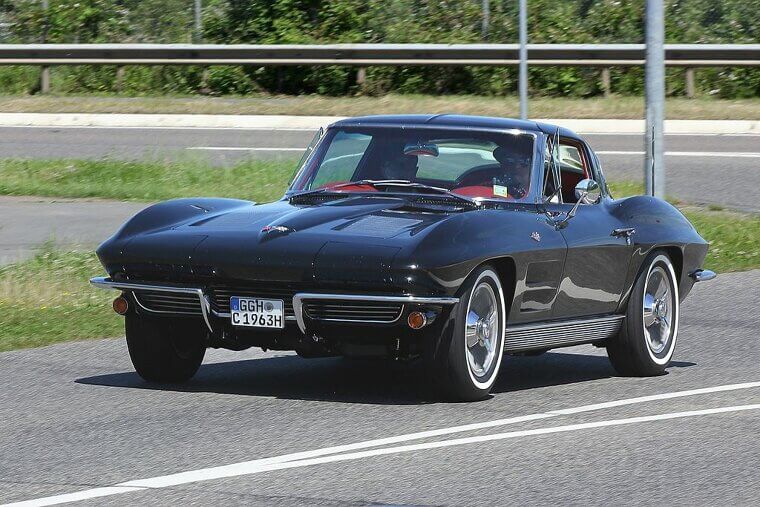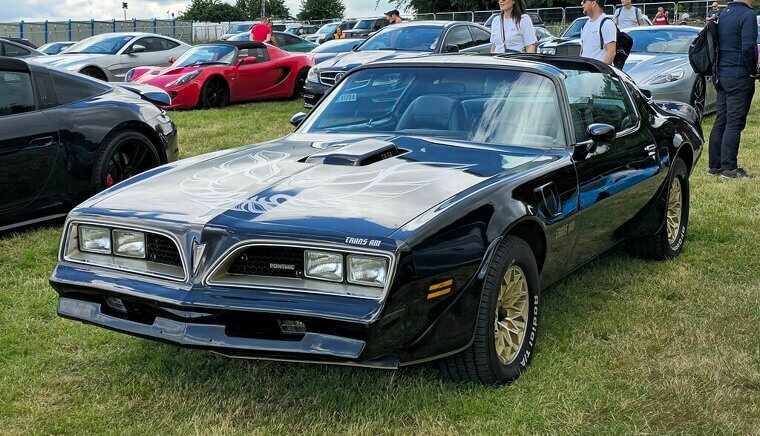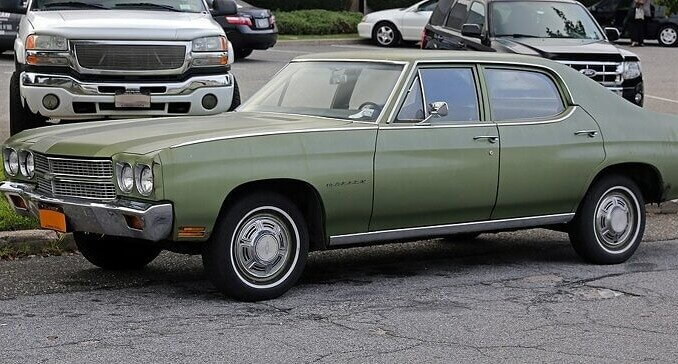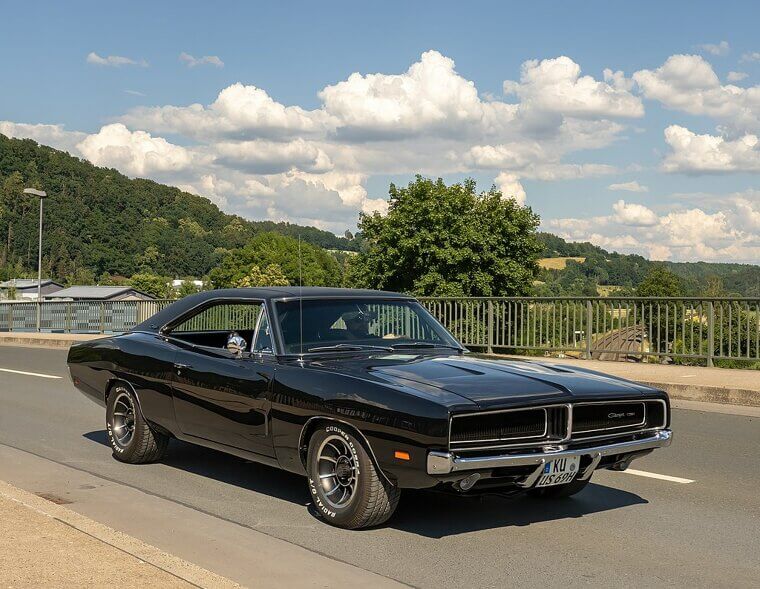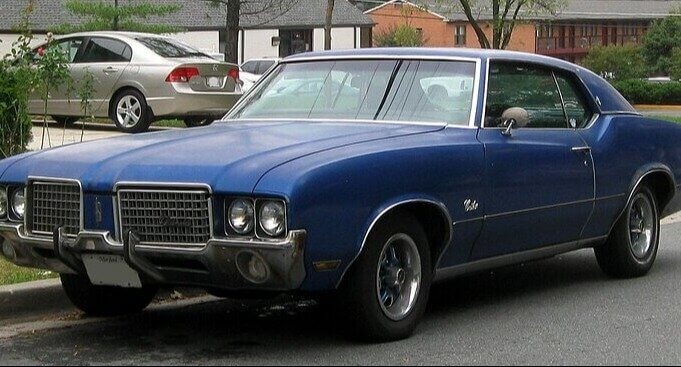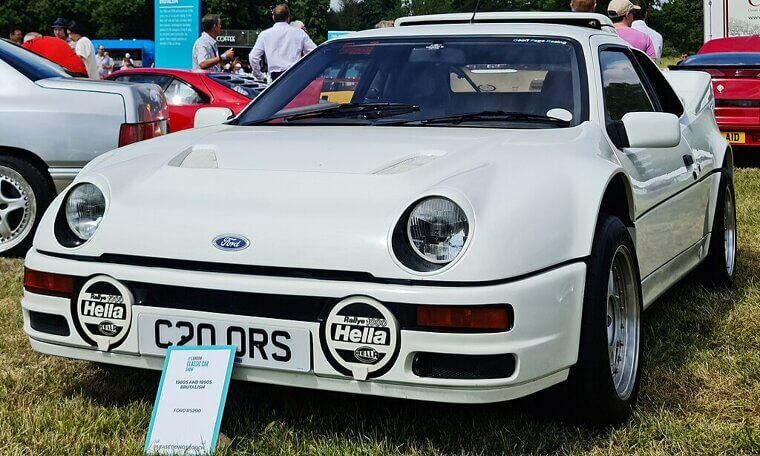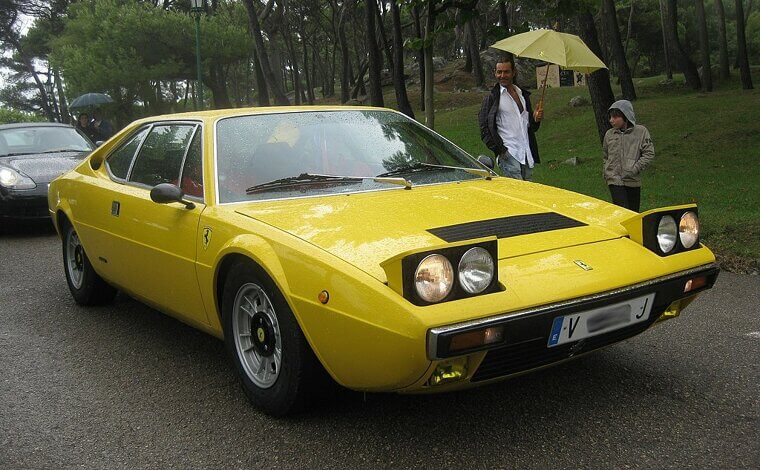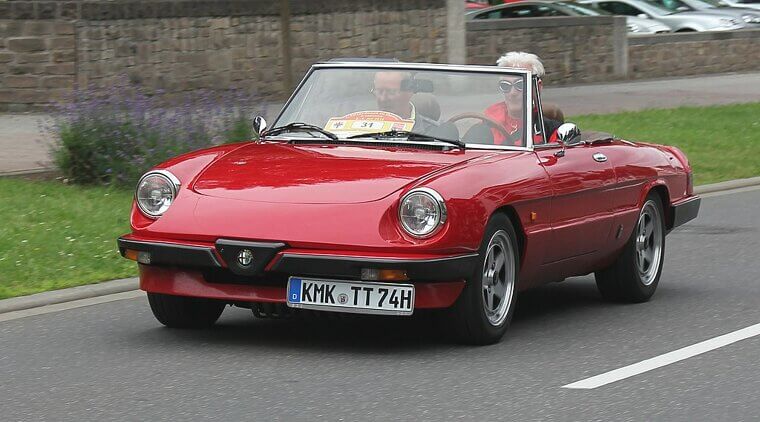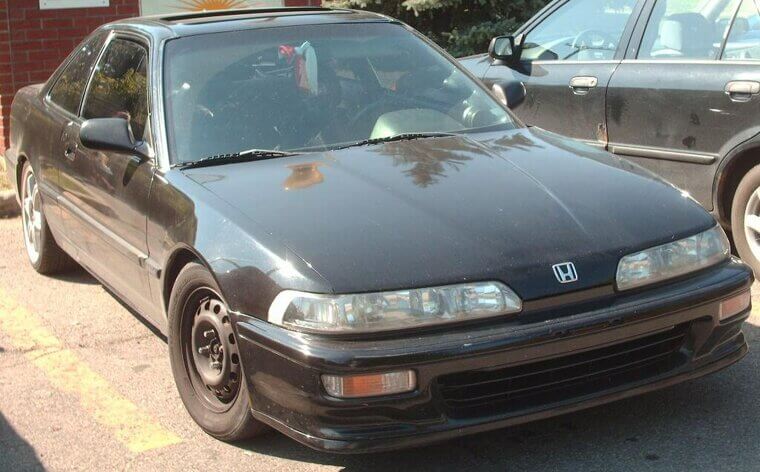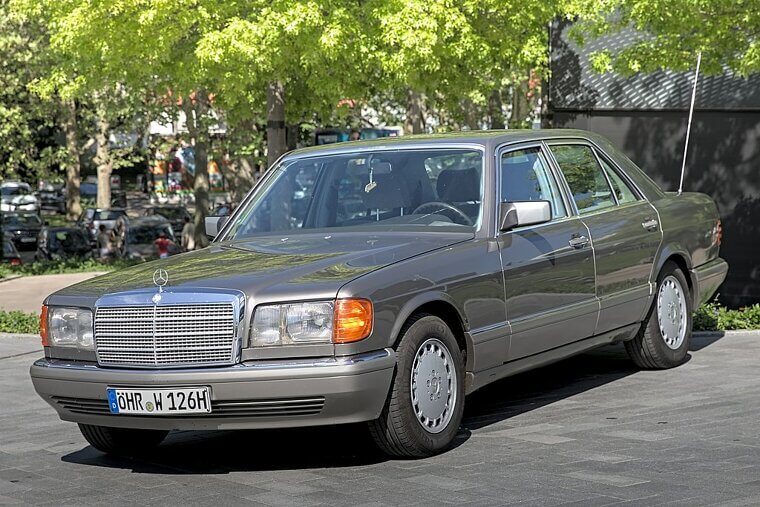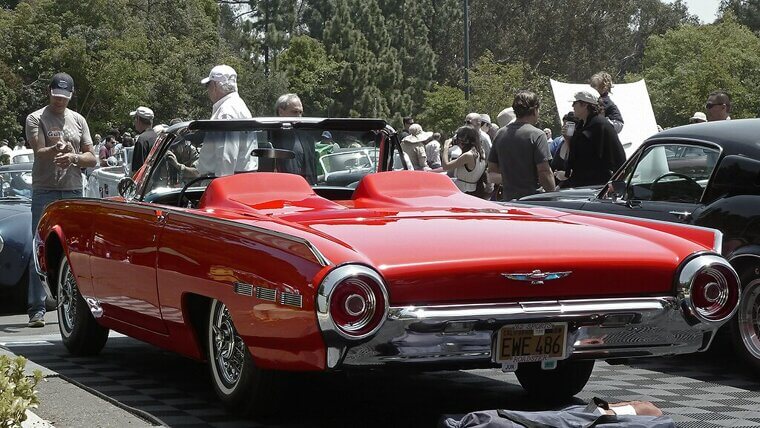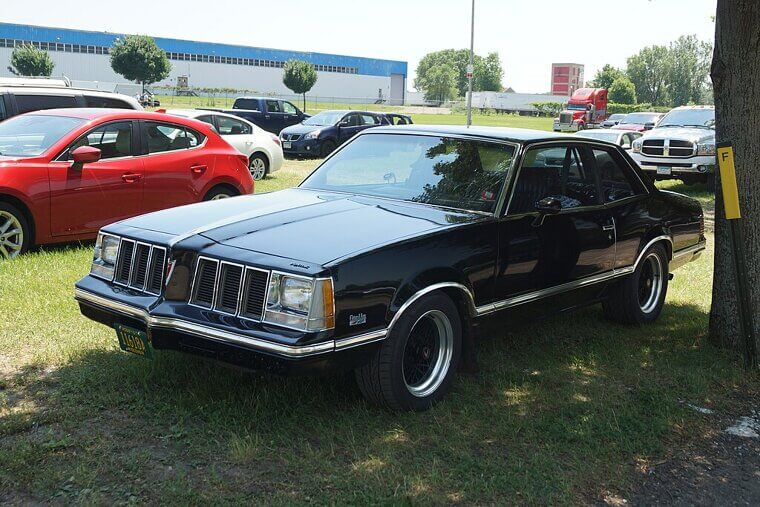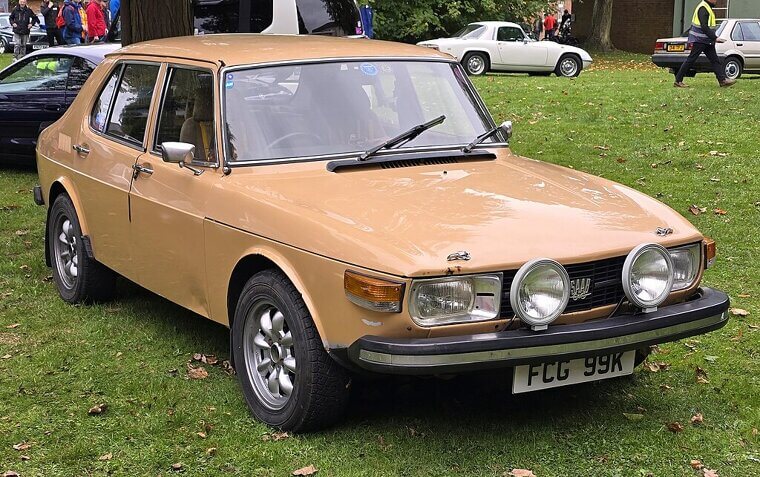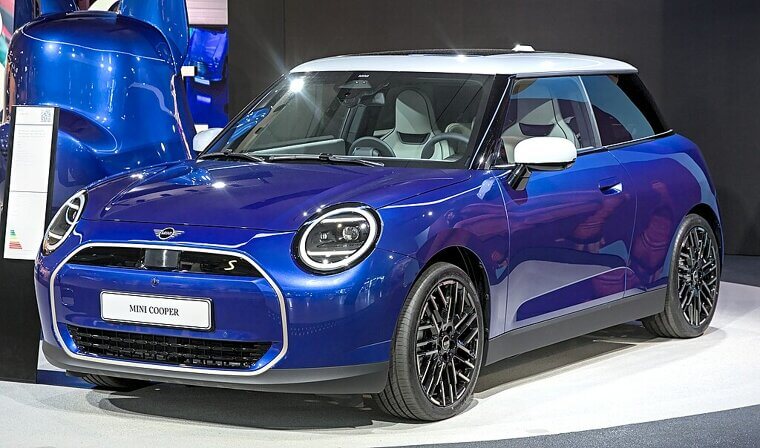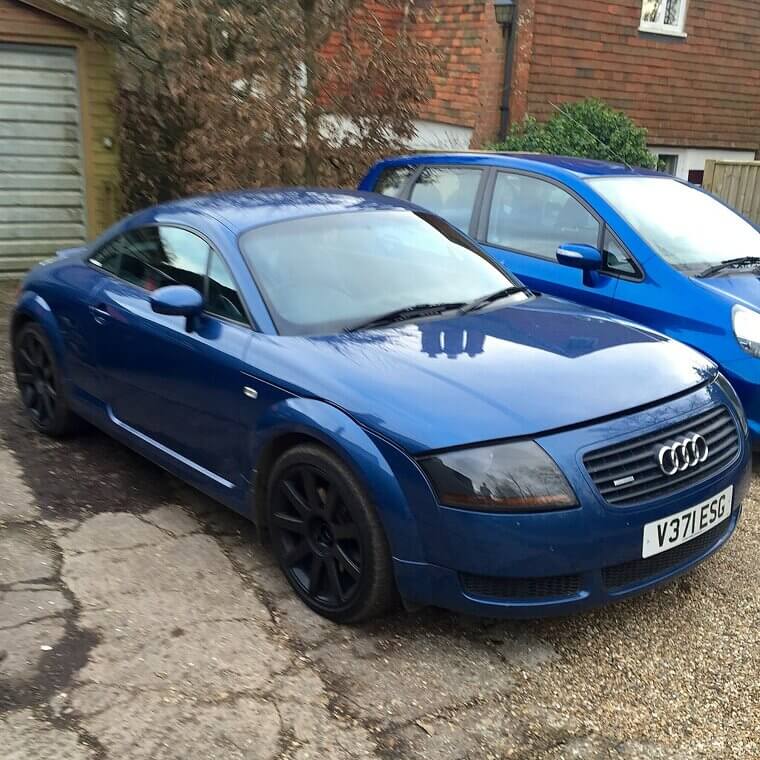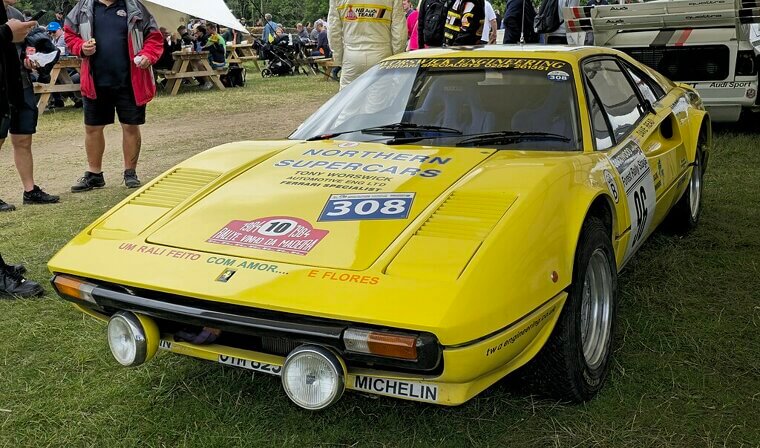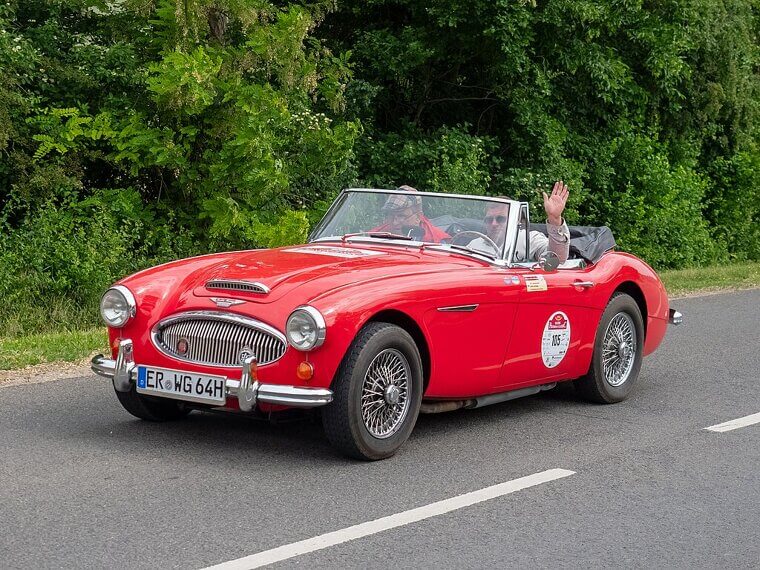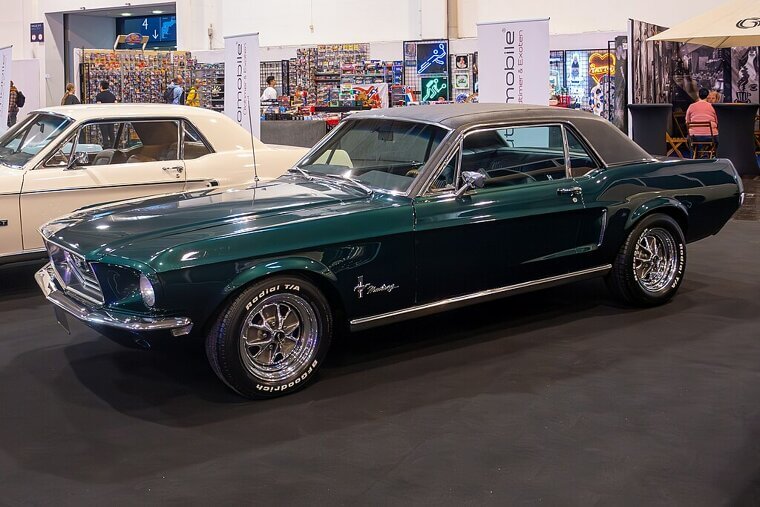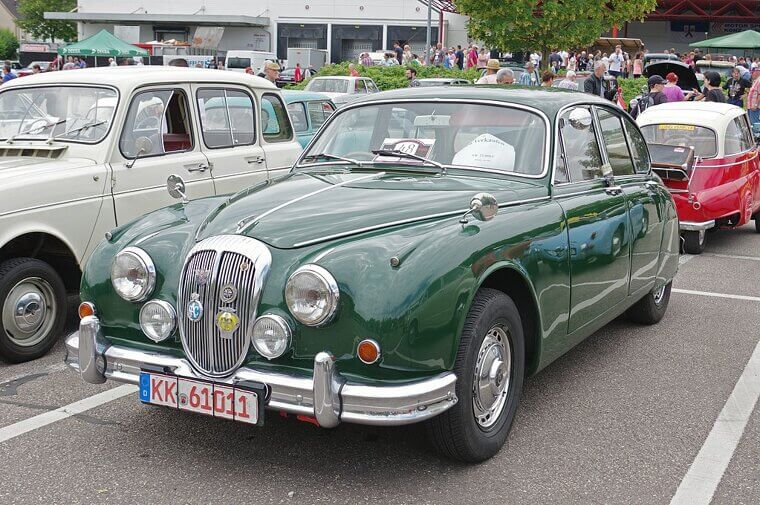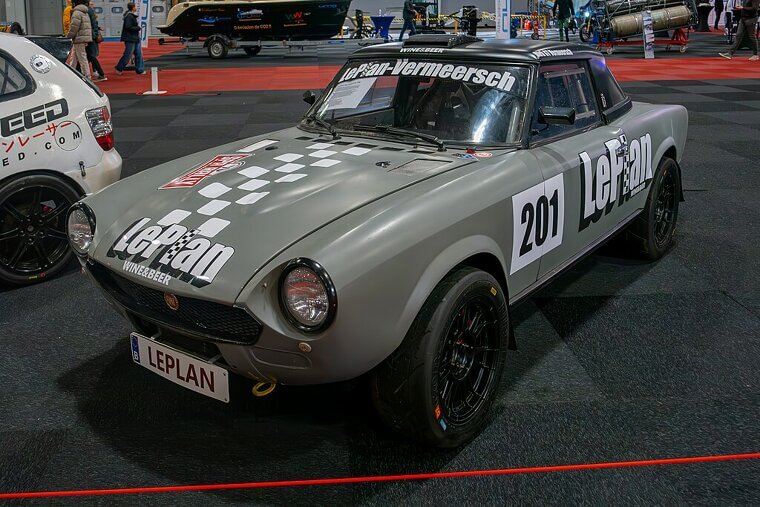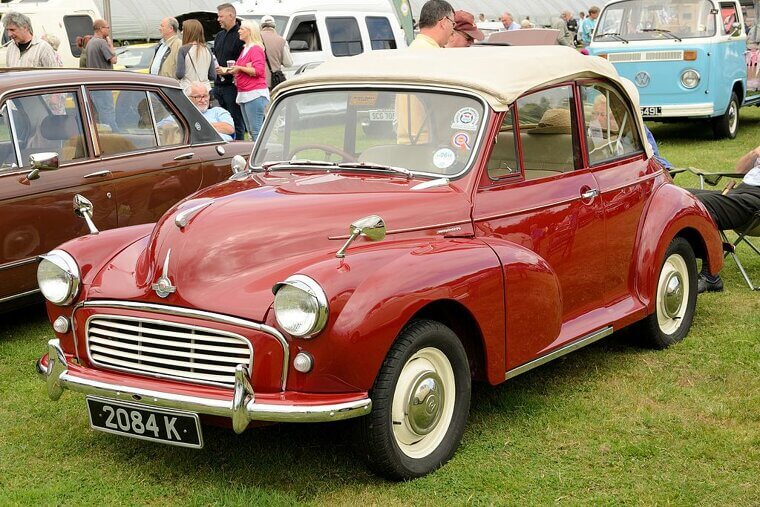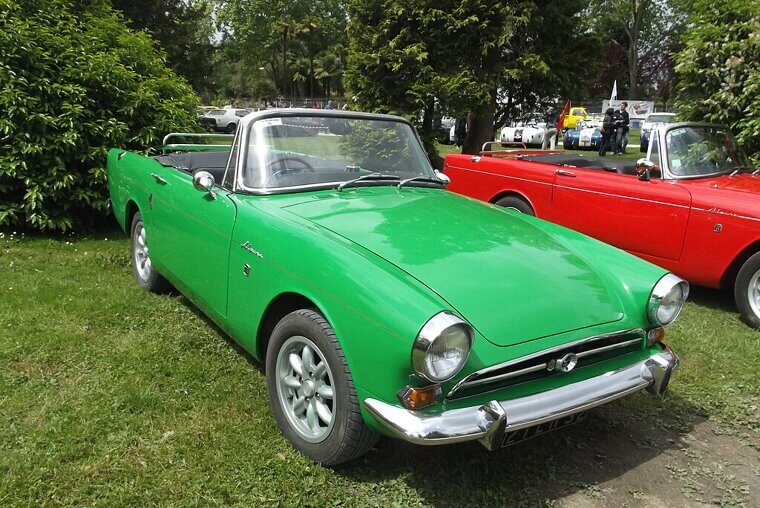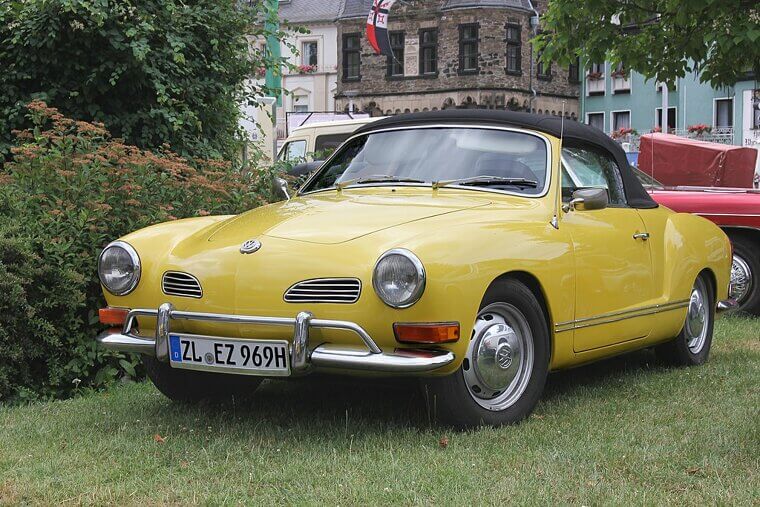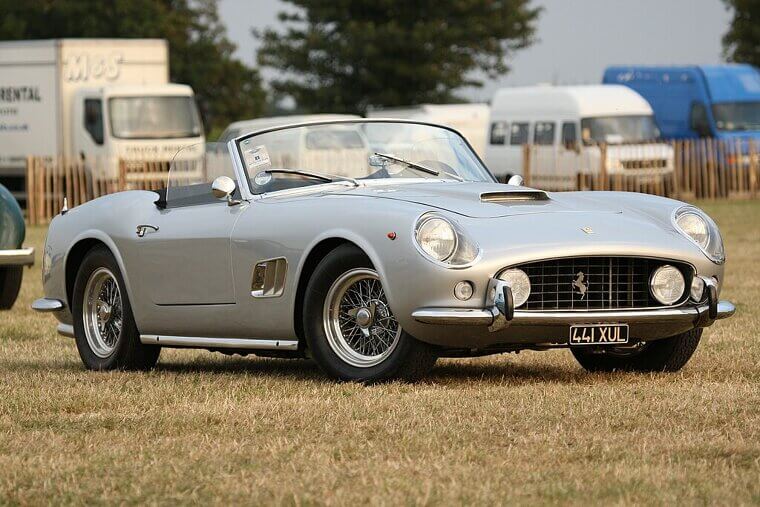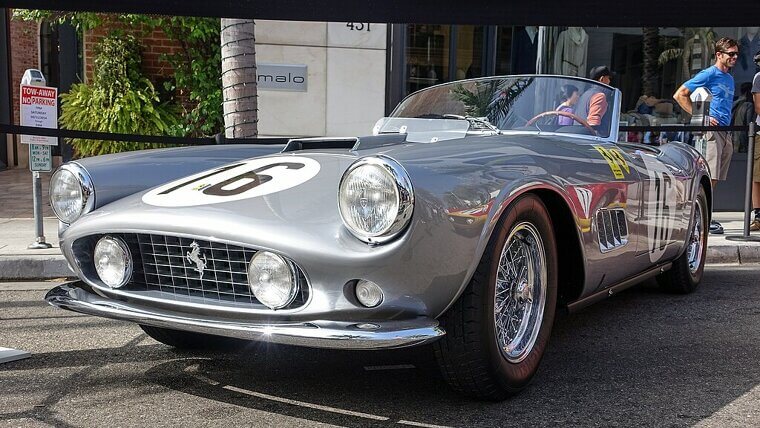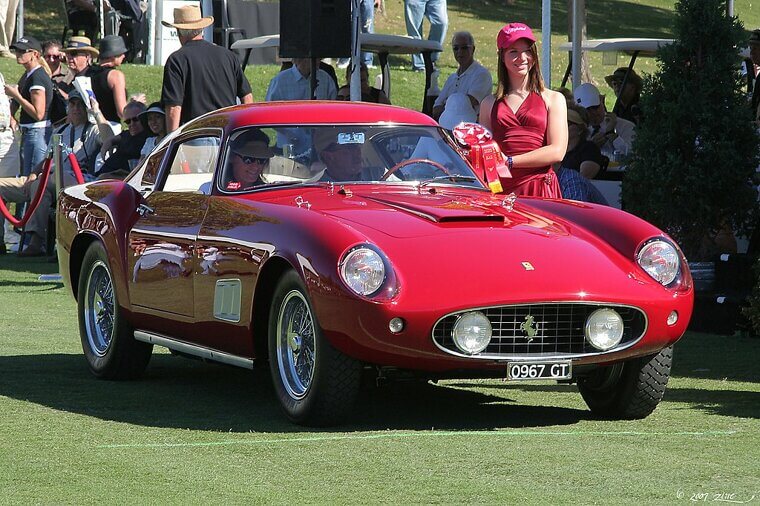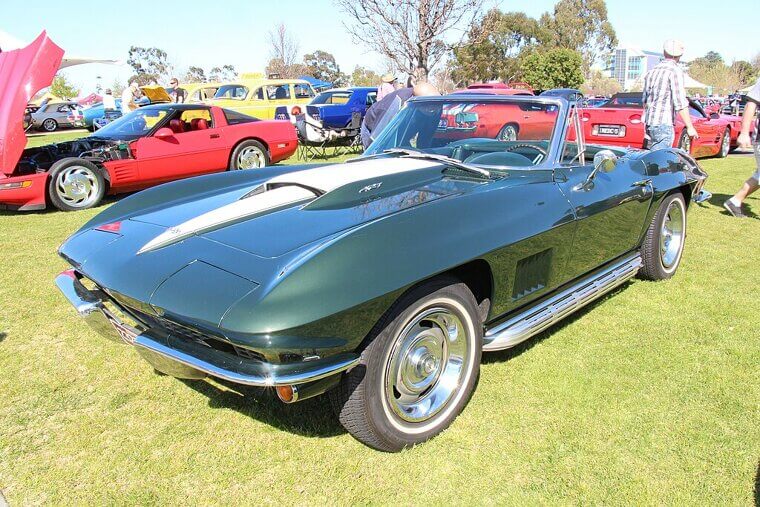Jaguar E-Type Series III (1972)
Enzo Ferrari allegedly called the E-Type “the most beautiful car ever made,” and with a 5.3L V12 engine it’s more than just a pretty face. Its maintenance costs are not for the faint of heart (or wallet) though, and its earlier models tend to get more glory. Prices have been softening steadily.
Collectors now favor the earlier Series I and II versions, making the Series III less desirable on the market despite its powerful engine and grand touring appeal.
Plymouth Road Runner Superbird (1970 )
The Superbird is a muscle car that lived up to its name with its deadly-looking nose cone and rear wings. Since it was designed for NASCAR it moves like greased lightning too! It’s very unique though, and its design doesn’t appeal to everyone—hence its price depreciation. Despite its legendary status and racing roots, its exaggerated features can come off as gimmicky.
Many buyers now prioritize performance and versatility over sheer novelty, which has dragged values down significantly in recent years.
Maserati Sebring (1963–68)
How could a suave Italian grand tourer with a roaring V8 engine lose value? Well, it might be as elegant as heck but its reliability was a real obstacle, and not many owners could keep up with its crazy-expensive maintenance bills. Despite its stylish coachwork and luxurious interior, the Sebring’s complex mechanics and spotty parts availability have discouraged restoration efforts.
It’s a looker, no doubt—but for many buyers, the headache just isn’t worth the hassle or financial gamble anymore.
Lamborghini Espada (1968–78)
Finding a grand tourer with a V12 engine and four doors is like finding a unicorn eating your breakfast—surprising and weird, though not unwelcome. It added practicality but that made it kind of niche, and in combination with an expensive upkeep, prices are dropping. Its futuristic styling also isn’t everyone’s cup of tea, and the driving experience can feel dated by modern standards.
While undeniably bold, the Espada’s quirks are limiting its appeal in today’s classic car market.
Ford Thunderbird (1972–76)
The Thunderbird’s a luxury cruiser that looked the part and came loaded down with cool tech (for its day, of course). Despite having a classic aesthetic, the Thunderbird’s genre lost popularity and its large, heavy build got it earmarked as a “gas guzzler” along with similar luxury cars. Its bulky frame and soft performance haven’t aged well compared to sportier classics.
Changing tastes, rising fuel costs, and tightening emissions regulations have made these models harder to justify as collector investments.
Chevrolet Corvette L88 (1967)
The fact that the L88 comes with a 427 V8 engine should indicate its true purpose: it was designed as a track champion, and in theory that checks out. However, it’s not practical for everyday use and it’s super rare so replicas flooded the market, damaging the original’s value. Because GM intentionally underrated its horsepower and omitted creature comforts, it was never meant for casual driving.
That limits its appeal today. And with so many fakes in circulation, buyer confidence has taken a major hit, pushing prices downward despite its legendary reputation.
Pontiac Trans Am (1976–1981)
The Trans Am ran high on its “Smokey and the Bandit” fame, but it was also an aggressive beast famous for its screaming chicken hood decal. Millions of units were made so it’s not super rare, and emissions regs crushed the performance of later models. What once screamed power now feels more bark than bite, especially to modern collectors.
Oversaturation, sluggish acceleration, and dated handling mean prices have stagnated—and in many cases, dropped significantly across the board.
Chevrolet Chevelle (1968–1972)
If you wanted affordable muscle in the late ’60s and early ’70s, you went with the Chevelle—especially the SS 454 model with its 450 horsepower flex. The market’s shifted more towards rare muscle cars now, and there’s loads of Chevelles around (plus, non-resto-mod originals are hard to find). With so many heavily modified or cloned versions floating around, authenticity is harder to verify.
This oversupply has cooled demand, especially among serious collectors looking for pristine, untouched classics.
Dodge Charger (1968–1970)
Famous for its spotlight in Bullitt and The Dukes of Hazzard, Chargers packed growling V8s and big block engines in the R/T models. Earlier Chargers are a hot property, while the later ones suffer from rust and various copies that hit their price tags hard. The high number of replicas and over-restored examples has made buyers cautious.
While nostalgia still fuels some interest, authenticity concerns and rising restoration costs have cooled the market for these iconic muscle machines.
Oldsmobile Cutlass (1968–1972)
The Cutlass combined luxury and muscle with a powerful V8 engine, and at one point was among the best-selling cars in America. As a result, there’s a lot of them, and since many were driven hard and repaired, there’s now less parts for restorations. That popularity ironically hurt its long-term value, making it too common to excite collectors.
Original-condition examples are rare, and the rising cost of restoring well-worn models has discouraged investment in this once-beloved classic.
Ford RS200 (1985)
Turbo-powered, mid-engined, and AWD-capable, the RS200 only had 200 units made, and while it was so feral it scared everyday drivers, it wasn’t wild enough for thrillseekers. Hardcore collectors love it, but the average buyer’s lost interest—especially now new rally-style cars are on the market. Its spartan interior and raw, unforgiving handling make it more of a museum piece than a weekend driver.
Compared to today’s high-tech rally-inspired cars, the RS200 feels harsh and impractical, limiting its resale appeal outside a small enthusiast circle.
Ferrari Dino 308 GT4 (1979)
The Dino badge was a tribute to Enzo Ferrari’s son, and while it should be a cherished sentiment, purists see it as confusing and un-Ferrari. Even though its wedge shape divided opinions, the Dino had a lot of attention until focus shifted to more iconic models. The Bertone styling clashed with Ferrari tradition, and its 2+2 layout further alienated die-hard fans.
As collectors chase more recognizable Ferraris, the 308 GT4’s market value has steadily declined despite its solid performance and historical significance.
Alfa Romeo Spider (1983–1990)
It’s clear that the Spider was of Italian design—its iconic look included a long nose, short tail, and elegant vibes. It’s pretty, but there were so many around that they’re not exactly rare… and its infamous unreliability has cost it popularity. Although it offered an affordable way to own a European convertible, the constant mechanical issues—especially with the fuel injection and electrical systems—pushed many owners away.
As classic car buyers grow more cautious, demand for the Spider continues to decline.
Acura/Honda Integra Type-R (1995–2001)
The Integra’s sharp handling, B18C engine and front-wheel drive performance made it a Japanese domestic market (JDM) legend and prices skyrocketed for a while. Since then the market’s shifted; it doesn’t help that many are heavily modded, so unless the vehicle’s original and untouched, values have tanked. The surge in early 2000s tuner culture led to countless engine swaps, cosmetic changes, and questionable upgrades.
Purists now struggle to find clean examples, and even those come with inflated restoration costs that turn away potential buyers.
Mercedes-Benz W126 (1979–1992)
The W126 was built with its era’s cutting-edge tech and engineered to be pretty much bulletproof… which in the long run has actually worked against it! They survive for so long, there’s plenty on the roads, and modern buyers are after something with more advanced tech. Its overabundance and dated luxury features have dulled its desirability.
While still admired by enthusiasts, most shoppers now want newer, flashier alternatives, leaving the W126 stuck in a value limbo despite its legendary durability.
Ford Thunderbird Sport Roadster (1962–63)
Stylish curves, sporty two-seater configuration and a rumbling V8 engine were all Thunderbird hallmarks, yet even a car as beautiful as this one gets overshadowed by more famous muscle cars. They’re expensive to restore and repair too, so purchasing one is a cash sink. Its rarity doesn’t always translate to desirability, especially when flashier, higher-performing models from the era dominate auctions.
The Sport Roadster’s niche appeal and sky-high upkeep costs have dragged its resale value down in recent years.
Pontiac Grand Am (1973–75)
The Grand Am aimed to combine luxury and muscle with refined handling, and then the worst happened: the oil crisis hit and suddenly its V8 selling point became a negative. This early model became forgotten among later Grand Ams, and it failed to live up to the glam of its siblings. Today, few collectors prioritize this model, and parts scarcity has further discouraged restorations.
Its heavy build and modest performance didn’t help, and as gas prices rose, demand plummeted.
Saab 99 (1968–84)
Its turbocharged engine and front-wheel drive made the Saab 99 ahead of its time, but the quirky Swedish style—though practical—isn’t everyone’s bag. Also bear in mind its turbo tech is old-school; reliability’s quite hit-and-miss, and that’s reflected in its value. The unusual layout and controls can confuse drivers unfamiliar with Saab’s eccentric design philosophy.
Add in sluggish acceleration by modern standards, rust-prone bodywork, and tricky maintenance, and it's easy to see why collectors hesitate. Even enthusiasts admit the 99 is more of a niche curiosity than a hot-ticket classic.
Mini Cooper S (2002–06)
The Mini Cooper S was all British charm—a turbocharged hot hatch with the handling of a go-kart and sporty vibes. They boomed big at the time and loads flooded the market—so many that now their values are normalized, especially since modern Minis have more to offer. Earlier models also suffer from common mechanical issues like power steering pump failures and transmission problems, which make them less appealing long-term.
Combine that with dated tech and interior wear, and resale values continue to dip steadily.
Audi TT Mk1 (1999–2005)
When it came out, the TT Mk1 was stunning, though arguably, it hasn’t aged well. While some enjoy its retro charm, many find it looks dated. The later Mk2 and Mk3 models have since stolen the show with more advanced features, leaving the Mk1 behind the times. Interior materials haven’t held up well either, and the early models lacked the driving refinement Audi would later master.
Today’s buyers are more interested in performance, safety, and modern connectivity—areas where the Mk1 now feels woefully outclassed, dragging its market value down.
Ferrari 308 GTB/GTS (1974–1989)
Any fans of this period will recognize the Ferrari from Magnum, P.I.—a mid-engine V8 with classic Ferrari styling. Since it was so popular, over 12,000 flooded the market; now buyers are looking for either rarer Ferraris or more modern examples. Its performance, while respectable in its day, now feels tame compared to today’s standards. Maintenance costs remain high, and many examples have mileage or cosmetic issues.
As a result, collector demand has cooled, and prices have softened despite the car’s iconic status.
Austin Healey 3000 (1959–1967)
The raspy exhaust and beautiful curves mark the Healey 3000 as a charming British scoundrel; it has old-school heart, though that’s not always a good thing! The market’s been muddied by mods galore, plus it lacks the tech and comfort that modern buyers want. Its stiff ride, heavy steering, and limited weather protection make it a challenge for regular driving.
Add in rust issues and rising restoration costs, and many potential buyers opt for more practical or better-equipped vintage roadsters.
MG TC (1945–1950)
The MG TC introduced post-war America to sports cars in style, and they were super popular with G.I.s. They hold an important place in automotive history, no doubt, but by today’s standards? They’re slow as snails, and their collector base is shrinking quickly. With minimal safety features, a cramped cockpit, and sluggish performance, the TC feels more like a museum piece than a weekend cruiser.
Younger collectors rarely seek them out, which has put consistent downward pressure on their market value.
Alfa Romeo Giulietta (1954–1965)
If the Giulietta were a person it would be an opera-singing Italian heartbreaker, but since the original’s debut more advanced models have stolen its spotlight. Combine that with its susceptibility to rust and parts rarity, and you can see why demand for the vehicle is drying up. Its delicate construction and underwhelming performance by modern standards have further cooled interest.
Even passionate Alfisti often favor newer models that are easier to maintain and offer a more spirited driving experience.
Ford Mustang V8 (1965–1973)
Big-engine power with optional V8s, the Mustang defined the pony car genre and became a cultural icon, so while it’s a classic piece of Americana, there’s so many of them! Between modding dilution, high restoration costs and a resale value that didn’t keep up, the Mustang’s value has dropped significantly. Countless versions have been chopped, swapped, or customized, making truly original examples harder to find.
Combined with stiff competition from rarer muscle cars, the Mustang’s once-mighty pricing has seen a sharp and steady decline.
Daimler V8 250 (1962–1969)
The 2.5L V8 engine in the 250 gave it more juice than some Jaguars, but the Daimler’s reputation didn’t go very far outside the UK. Part rarity and confused branding between this and the Jag Mk2 have led to a leaking value. Despite its smooth ride and refined engine, it’s often overlooked in favor of its Jaguar twin.
The collector market remains tepid, with limited international demand and rising upkeep costs further driving prices downward. It's a classy car—just one stuck in identity limbo.
Fiat 124 Spider (1966–1985)
Budget-friendly Italian flair with rally history? Yes, please! Or so you’d think; lots were made and are still available, but they’re rather prone to rust—buyers would rather opt for the 2016 revival Fiat and Mazda, which have less oxidized flake plagues. Add to that electrical gremlins, weak resale value, and a soft, sometimes squeaky interior, and enthusiasm starts to fade fast.
While charming, the original 124 struggles to compete with modern alternatives that offer retro looks without the high maintenance headaches.
Morris Minor 1000 Convertible (1956–1971)
Post-war Britain saw the 1000 convertible screech into hearts across the UK, earning it the title of the first British car to sell one million units! It’s humble and endearing, but underpowered and plentiful, so not exactly what you’d call a rare find. Its slow pace, basic interior, and lack of modern conveniences have limited its appeal outside of nostalgic buyers.
Though beloved by British motoring fans, global interest is fading—and so are the values at auction.
Sunbeam Alpine (1953–1955 / 1959–1968)
Finding fame as James Bond’s brief ride in Dr. No, the Alpine quickly lost street cred when the later models came out and improved on it in virtually every respect. It also found opposition close to home in the V8-engined Sunbeam Tiger, so it had a lot of sibling rivalry. The Tiger’s superior performance overshadowed the Alpine’s more modest specs, and collectors tend to chase the brawnier alternative.
With dated styling and limited power, the Alpine’s market has cooled, making it a less desirable classic despite its cinematic pedigree.
Volkswagen Karmann Ghia (1955–1974)
This vehicle’s a VW Beetle chassis decorated with a Ghia body and hand-built by Karmann, and for a while its popularity spiked. Since then buyers have lost interest; it doesn’t have impressive performance or unique selling points, but it does provide expensive bodywork restorations! Its modest engine and underwhelming acceleration don’t do much to excite collectors today.
And while the styling is timeless, sourcing or repairing its delicate panels is notoriously costly. That blend of low thrills and high expense has kept prices sliding downward.
Ferrari 365 California Spider (1966–1967)
With only 14 California Spiders made, this vehicle’s a great example of how super rare doesn’t always equal super valuable. While it’s sleek and has Pininfarina styling, collectors don’t dig its large size as much as leaner ’60s cars or other iconic Ferraris. Its heavy proportions and touring focus don’t align with the high-revving, agile spirit many Ferrari enthusiasts crave.
Add in limited visibility, high upkeep costs, and lower name recognition, and you get a rare Ferrari that struggles to command top-tier demand.
Ferrari 250 California SWB Spider Alloy (1960–1962)
Losing value doesn’t always mean cheap, as is the case with the Spider Alloy. Sure, it’s not as valuable as it once was, but it’s still super expensive, and no wonder—it’s a beautiful car with V12 pedigree. However, its buyer base is still very exclusive. With so few produced and a legacy tied to both Hollywood and motorsport, demand remains—but only within an ultra-wealthy niche.
Broader collector interest has cooled, and even slight softening in this market translates to millions in lost value.
Ferrari 250 GT California LWB Alloy Spider (1957–1959)
For the same reasons as the Spider Alloy, its LWB (Long Wheelbase) alternative is suffering from market fatigue, and the top-tier buyers just aren’t looking to purchase right now—hence its price tag drop. Over-restoration has also killed interest to some degree. Many examples have been polished to the point of losing their historical charm, and authenticity has become a growing concern among seasoned collectors.
With fewer fresh buyers entering the ultra-high-end Ferrari scene, even this legendary model is seeing softer bidding and longer sale cycles.
Ferrari 250 GT TdF Coupe (1956–1959)
The 250 earned its TdF (Tour de France) badge by winning races, and while that makes it a great display piece for a collector’s garage, current trends are for usable cars. And this one? It’s just not practical for day-to-day use. Its raw ride, lack of creature comforts, and extreme value make owners wary of driving it much at all.
Combine that with rising upkeep costs and a narrower buyer pool, and even this legendary race-bred coupe has seen its market cool off.
Chevrolet Corvette C2 427 CID V8 L88 Coupe (1967)
When it came to the L88 Coupe’s horsepower, Chevy downplayed it for insurance purposes—it was capable of more than 500 hp! Unfortunately, some have been discovered with questionable L88 authenticity, and that’s destroyed buyer trust and less people are interested. Because the L88 option was so rare and visually similar to other models, fraudulent clones became common.
Even genuine examples are now scrutinized heavily. That cloud of uncertainty, paired with massive price tags, has turned off collectors who would rather invest in verified and better-documented classics.

